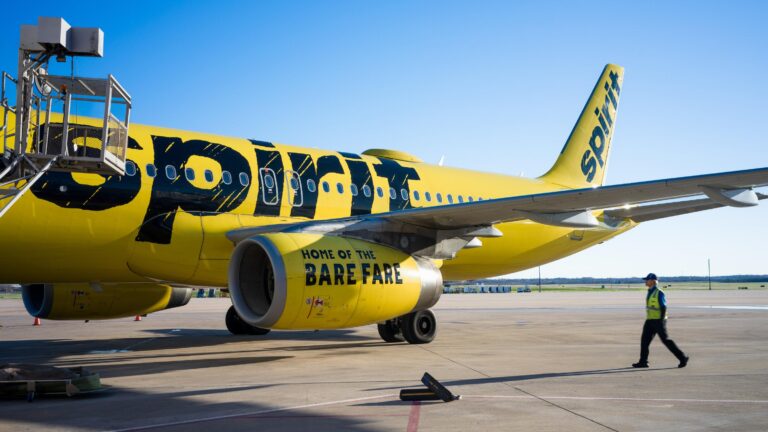Spirit Airlines has announced its complete withdrawal from the Bay Area following its recent bankruptcy filing. The budget carrier’s decision marks a significant shift in the region’s airline landscape, disrupting travel plans for many low-cost flyers who have relied on Spirit’s services. This move comes amid broader financial struggles for the airline, which has been navigating a challenging economic environment. Details on the timeline and impact of Spirit’s exit are emerging as passengers and industry stakeholders respond to the sudden change.
Spirit Airlines Exits Bay Area Market Following Bankruptcy Filing
In a significant move shaking up local travel hubs, Spirit Airlines has announced its complete withdrawal from the Bay Area market, following its recent bankruptcy filing. This decision affects numerous routes previously served by the ultra-low-cost carrier, leaving passengers and airport authorities scrambling to adjust. The carrier’s exit removes a budget-friendly option for many travelers who relied on Spirit’s aggressive pricing and direct connections to various domestic and international destinations.
Key impacts of Spirit’s departure include:
- Reduction in low-cost competition at major airports like San Francisco International Airport (SFO) and Oakland International Airport (OAK).
- Flight cancellations and rebooking challenges for existing Spirit customers.
- Potential opportunity for other budget airlines to increase their Bay Area presence.
| Airport | Previous Spirit Destinations | Frequency (Weekly) |
|---|---|---|
| SFO | Las Vegas, Denver, Fort Lauderdale | 12 |
| OAK | Los Angeles, Chicago, Dallas | 8 |
| SJC | Seattle, Phoenix | 5 |
Implications for Local Travelers and Regional Airports
Local travelers who have relied on Spirit Airlines for budget-friendly fares now face a significant disruption in their travel plans. Without Spirit’s presence in the Bay Area, passengers will need to shift to alternative carriers that often have higher base fares and additional fees. This departure also reduces the availability of non-stop flights to popular domestic and international destinations, potentially increasing travel times and connection hassles for those seeking convenient and affordable options.
Regional airports surrounding the Bay Area could experience a notable shift in passenger traffic patterns. Airlines operating from secondary hubs may see an uptick in bookings as travelers look for alternatives to Spirit’s routes. However, with fewer low-cost options, these airports might face challenges attracting budget-conscious flyers. The table below illustrates potential changes in passenger volume and fare averages at key regional airports post-Spirit exit:
| Airport | Projected Passenger Change | Average Fare Increase |
|---|---|---|
| Oakland International (OAK) | +12% | +$45 |
| San Jose International (SJC) | +8% | +$38 |
| Stockton Metropolitan (SCK) | +5% | +$30 |
- Fare hikes could push budget travelers towards less convenient ground transportation or delay travel plans.
- Flight availability for key leisure and business routes will likely narrow, reducing flexibility for frequent flyers.
- Regional airports must adapt rapidly to accommodate shifting demand and possibly attract new low-cost carriers.
Analyzing the Financial Struggles Behind Spirit Airlines Collapse
Spirit Airlines’ financial demise can largely be attributed to a combination of mounting debt and operational inefficiencies that strained its cash flow. Despite aggressive expansion attempts, the airline struggled to keep up with rising fuel costs and increased competition from both low-cost and legacy carriers. Key financial indicators showed persistent losses, with Spirit’s debt-to-equity ratio climbing alarmingly, signaling investor unease and hindering further capital influx.
- High debt levels: Spirit’s liabilities exceeded industry averages, curtailing flexibility.
- Fuel price volatility: Unpredictable fuel costs eroded profit margins.
- Competitive pressures: Market oversaturation compressed ticket prices.
- Operational disruptions: Frequent delays and cancellations led to customer trust issues.
| Fiscal Year | Net Loss (in Millions) | Debt-to-Equity Ratio | Fuel Expenses (in Millions) |
|---|---|---|---|
| 2021 | $150 | 3.8 | $320 |
| 2022 | $210 | 4.2 | $410 |
| 2023 | $285 | 4.7 | $480 |
These financial stressors were compounded by strategic missteps such as overreliance on volatile markets and a lack of diversification in route offerings. The Bay Area was a critical hub but faced steep competition from both larger airlines and emerging ultra-low-cost carriers. As Spirit’s financial stability eroded, it had no choice but to exit these markets entirely, leading to a full withdrawal from the region—marking a stark retreat from what was once considered a promising growth area.
Strategies for Bay Area Airports to Attract New Budget Carriers
In light of Spirit Airlines’ complete withdrawal from Bay Area airports following its bankruptcy filing, airport authorities face a critical challenge. To remain competitive and sustain passenger volume, they must innovate aggressively to attract new budget carriers. One approach centers on enhancing fee structures to offer more incentives for low-cost airlines, including reduced landing fees and flexible gate usage agreements. Moreover, developing tailor-made marketing campaigns that showcase the Bay Area’s lucrative passenger market can draw carriers seeking rapid expansion.
Collaboration between airports and local government can also foster a more inviting ecosystem for budget airlines, focusing on streamlined regulatory processes and improved ground services. Key strategies include:
- Upgraded infrastructure with exclusive terminals or zones dedicated to budget carriers.
- Dynamic scheduling to optimize off-peak flight times and lower operational costs.
- Partnering with regional tourism boards to co-promote new routes and boost demand.
| Strategy | Expected Benefit | Implementation Timeline |
|---|---|---|
| Reduced landing fees | Attract entry-level carriers | 6 months |
| Dedicated budget terminals | Improved operational efficiency | 1-2 years |
| Regulatory streamlining | Faster route approvals | Ongoing |
Future Outlook
As Spirit Airlines officially exits the Bay Area market following its bankruptcy filing, travelers and the broader aviation industry will feel the impact of reduced low-cost flight options in the region. The airline’s departure marks a significant shift in the competitive landscape and raises questions about future service availability and pricing for Bay Area passengers. Industry watchers will continue to monitor Spirit’s restructuring efforts and the potential ripple effects on other carriers serving this key West Coast hub.




